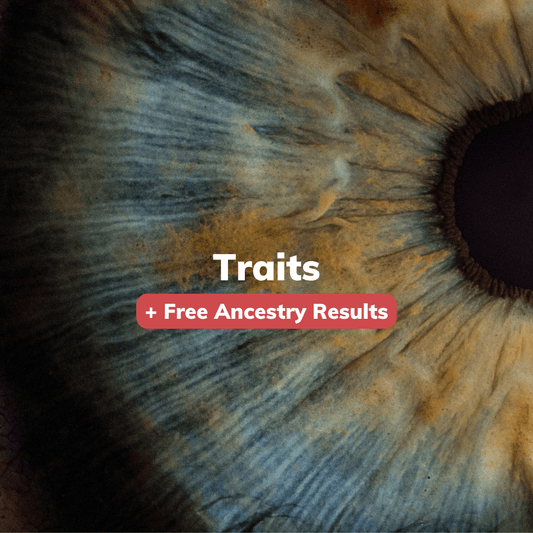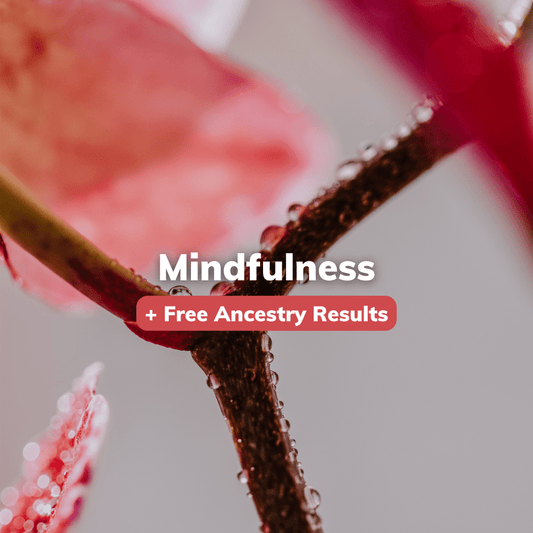
Earwax and body odor: Unwanted family members?
BioCertica Content TeamWritten by: Jonine Moller, M.Sc. in Sports Science
Earwax - The bodily secretion many millennials may know as the substance that Shrek uses to make his candle in the 2001 DreamWorks animation movie.
Besides being the reason behind the invention of the cotton bud (or cotton swab), earwax is not something most of us give much attention to. Individuals that have had their ears blocked by this substance may more likely be bothered by it.
Earwax (Cerumen) consists of saturated and unsaturated long-chain fatty acids, alcohols, cholesterol, and squalene [1]. Squalene is a type of oil, yellow in color, produced by your skin. These constituents originate from secretions of glands of the ear canal mixed with hair and skin particles [1].
The purpose of earwax is to oil, protect and clean your ears, thereby keeping them healthy. The formation of the “wax” results from dirt, dust, and other particles that get caught in the secretions of the ear canal’s glands [2].
The formation of the “wax” prevents the substance from moving further into the ear. The growth of skin in the ear canal and the motion of jaws (such as when we chew) help to push the earwax outwards. In this way, earwax is self-cleansing [2].
Ironically, the use of cotton buds to clean your ears from earwax may actually be the cause of it accumulating [3]. Only if it causes a hearing impairment is it recommended to remove earwax. Caution should be exercised with any removal method to prevent pressing the wax against the eardrum [3]. Ear candling is a hazardous method of opening the ear and not at all recommended [2].
Unless we press earwax into the ear, it remains in the outer third of the ear canal. Other than using cotton buds, hearing aids may cause the accumulation of earwax within the ear canal [2]. Other factors leading towards excessive earwax or earwax blockage (impaction) may include being elderly, the self-cleaning process not working properly [2], or the over or under-production of its constituents [3].
Symptoms of impacted earwax or an ear canal that has been partially or fully blocked by wax include [2, 4]:
-
Loss of hearing -
Tinnitus (ringing in the ears) -
Pain in the ear -
Ear itching -
Feeling of the ear being full -
Discharge or odor coming from the ear
Although the basic composition of earwax, as depicted above, remains unchanged, there is some variation in human earwax type. Some individuals (roughly 10% of most populations - East Asians excluded) have the dry type of earwax, while most (roughly 90% of most populations) have the wet type [5, 6]. The ABCC11 gene is the determinant of human earwax types.
Individuals with the CC and CT alleles of a SNP (“snip”) (specific gene variation’s address) the ABCC11 gene have the wet, yellow earwax type. In contrast, individuals with the TT allele have the dry, whitish earwax type [6]. Reportedly, the dry type is less likely to accumulate and cause subsequent problems [5].
The TT allele of the ABCC11 gene and thus dry earwax is mostly found in East Asians, whereas the gene determining wet earwax is most abundant in Europeans and Africans [6].
Together with determining your earwax type, the ABCC11 SNP is also to blame or to thank for the presence or absence of body odor. People with the ABCC11 (C;C) gene variant have typical body odor. ABCC11 (T;T) carriers have no body odor. The body odor of individuals with the ABCC11 (C;T) variant has body odor somewhere in between that of the other two groups [6, 7].
ABCC11 is a protein that is involved in the transport of molecules across membranes that typically occur in sweat glands, amongst others [7]. ABCC11 does not function as well in individuals with the T gene variation. The result is more dry earwax and less body odor due to gland secretions being less [7].
Knowing whether you have wet or dry earwax is not essential for your health, but it is definitely interesting to know. If you have the dry earwax type, you could definitely save on ear-cleaning time and materials. Having dry earwax also means that if you forgot to put on your deodorant while rushing to get dressed, there is no need to stress - a little bit of sweat won’t be identifiable by the noses of your neighbors. In our traits report you can find out what type of earwax and body odor you might have.
References:
[1] Okuda, I., Bingham, B., Stoney, P., & Hawke, M. (1991). The organic composition of earwax. The Journal of Otolaryngology, 20(3), 212–215. http://www.ncbi.nlm.nih.gov/pubmed/1870171
[2] Krouse, H. J., Magit, A. E., O’Connor, S., Schwarz, S. R., & Walsh, S. A. (2017). Plain Language Summary: Earwax (Cerumen Impaction). Otolaryngology - Head and Neck Surgery (United States), 156(1), 30–37. https://doi.org/10.1177/0194599816680327
[3] Wright, T. (2015). Ear wax. BMJ (Online), 351(July), 1–3. https://doi.org/10.1136/bmj.h3601
[4] Schwartz, S. R., Magit, A. E., Rosenfeld, R. M., Ballachanda, B. B., Hackell, J. M., Krouse, H. J., Lawlor, C. M., Lin, K., Parham, K., Stutz, D. R., Walsh, S., Woodson, E. A., Yanagisawa, K., & Cunningham, E. R. (2017). Clinical Practice Guideline (Update): Earwax (Cerumen Impaction). Otolaryngology–Head and Neck Surgery, 156(1_suppl), S1–S29. https://doi.org/10.1177/0194599816671491
[5] Sugiura, S., Yasue, M., Sakurai, T., Sumigaki, C., Uchida, Y., Nakashima, T., & Toba, K. (2014). Effect of cerumen impaction on hearing and cognitive functions in Japanese older adults with cognitive impairment. Geriatrics and Gerontology International, 14(SUPPL2), 56–61. https://doi.org/10.1111/ggi.12251
[6] Yoshiura, K., Kinoshita, A., Ishida, T., Ninokata, A., Ishikawa, T., Kaname, T., Bannai, M., Tokunaga, K., Sonoda, S., Komaki, R., Ihara, M., Saenko, V. A., Alipov, G. K., Sekine, I., Komatsu, K., Takahashi, H., Nakashima, M., Sosonkina, N., Mapendano, C. K., … Niikawa, N. (2006). A SNP in the ABCC11 gene is the determinant of human earwax type. Nature Genetics, 38(3), 324–330. https://doi.org/10.1038/ng1733
[7] Brown, S. (2013). The pharmacogenetics of body odor: As easy as ABCC? Journal of Investigative Dermatology, 133(7), 1709–1711. https://doi.org/10.1038/jid.2013.14


